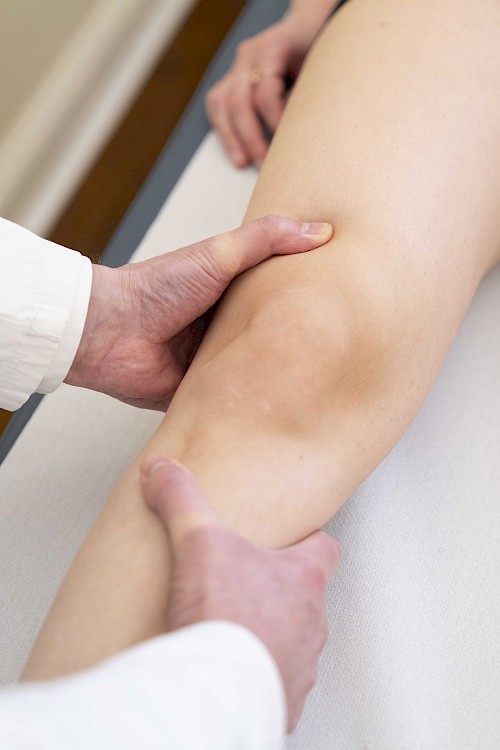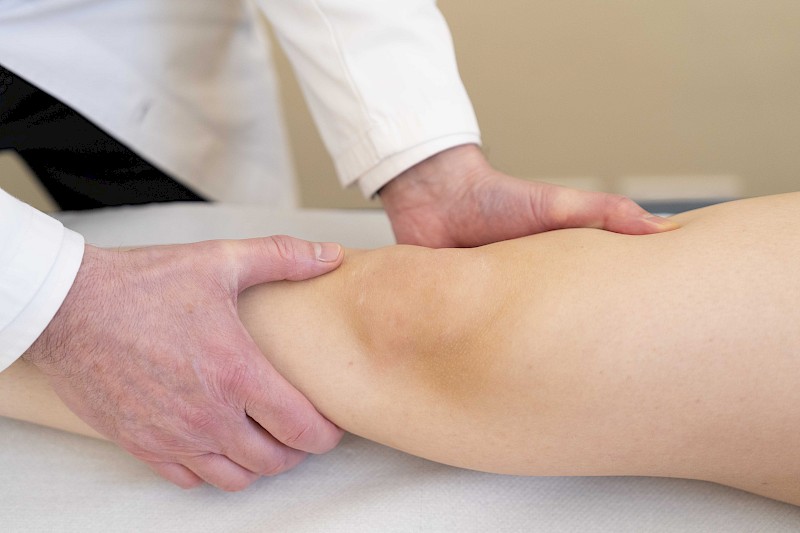The high training volume in competitive swimming can be a cause of overuse injuries.
Knee pain ranks second, after shoulder pain, as a common issue among competitive swimmers, especially among breaststroke swimmers.
To understand and prevent this condition, it is essential to know the biomechanics of the stroke.
- The kick begins with the knees fully extended and the ankles in plantar flexion.
- The recovery phase of the leg starts with hip and knee flexion, keeping the heels close together during this phase. As the knees and hips reach maximum flexion, the feet begin to dorsiflex, with the heels and knees slightly separating.
- The hips and knees reach maximum flexion when the toes point outward, with the tibia in external rotation and the ankle dorsiflexed. The feet are then pushed outward and backward as the knees gradually extend, keeping the ankles in dorsiflexion. As the legs continue to extend to knee level, they gradually come together.
- The knees reach full extension when the feet are almost together. At the end of the kick, the ankles reach maximum plantar flexion.
In light of all this, it is clear how knee pain and injuries in swimming generally occur due to excessive and incorrect use of the technical movement, resulting in functional overload of the muscle-tendon and ligamentous structures on the medial side, as well as compressive stress on the lateral compartment.
So, how can knee pain be prevented?

A close collaboration between the doctor and the coach is necessary in order to identify and correct technical errors in the flutter stroke.
Training loads, especially during the early phase of the season, must be gradually increased, but it is crucial to include gym workouts in the seasonal training plan that focus on strengthening the quadriceps muscle, the medial knee stabilizers, and the hip external rotators, as well as improving flexibility in the posterior muscle chain.
Today, in the field of rehabilitation, there are tests such as the Movement Analysis Test (M.A.T.) that, using high-speed cameras and force platforms, allow for the analysis of potential "weak points" in the knee and help design a personalized neuromotor training program.
